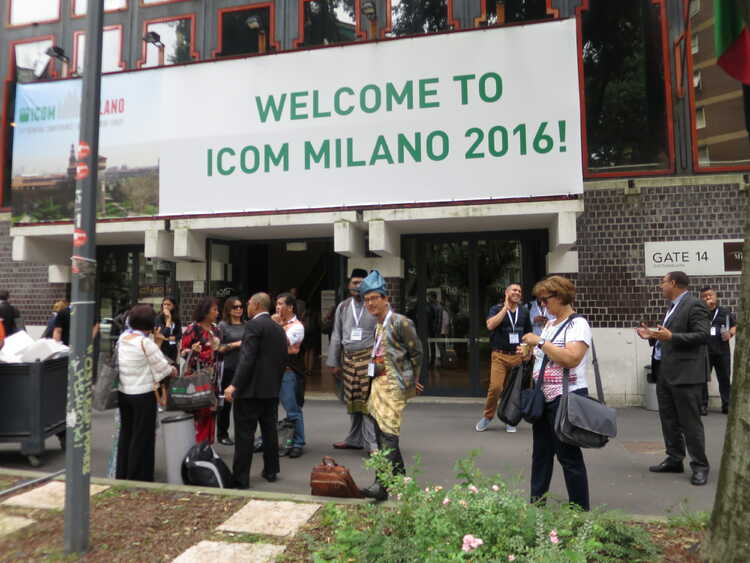The cultural landscape of ICOM itself is not easy to travel, least of all because the names of the committees are not very inviting: COMCOL (International Committee for Collecting), Intercom (International Committee for Museum Management), ICMEMO (International Committee of Memorial Museums in Remembrance of the Victims of Public Crimes), CAMOC (International Committee for the Collections and Activities of Museums of Cities), DEMHIST (International Committee for Historic House Museums).…... Thirty in total. It is quiet confusing for the first time attendees. ICOM describes the international Committees as ‘global think tanks’ on museum and heritage matters. Thanks to the app – new this year – it was not too difficult to navigate between the sessions, that were held in the MiCO conference building and museums in the city. The fun of these huge general conferences is the possibility for committee-hopping. An interesting new discovery I made was ICOFOM, the museology committee, that likes to call itself ‘the conscience of ICOM’.
Full program
Next to the committees dedicated to various museum specialties, ICOM has 119 National Committees, that are the main tools of communication between the General Secretariat and the ICOM members. Lots of opportunity for board positions, as most have 7 till 9 members. They organize the yearly conferences of the committee. Some have newsletters of publish books. Each three year all the committees come together in the General Conference, for three days full of presentations in smaller sessions, key notes, memorials lectures, general assemblies and elections for all the boards. Suay Aksoy form Turkey, who used to be president of ‘my’ committee CAMOC, is ICOM’s new general president; a warm, intelligent and brave woman.
Parties
On top of this full program there are excursions and parties, great for more networking and meeting more museum colleagues from one of the 130 different countries present in Milan. Italy has a reputation when it comes to food and drink, but the conference did not live up to it. Compared to the exuberant party in one of the Samba schools in Rio de Janiero three years ago, the small plate of risotto and the lukewarm prosecco at the Farewell party were somewhat meager. The swarms of mosquito’s chased the partygoers away, and the Italian rock did not help either. ‘They should have salsa’, a woman from Mexico complained. The venue of the party was the Triënnale building with some good exhibitions. No prosecco inside, but no mosquito’s either. It was nice to continue conversations that were started in Zagreb, Berlin, Amsterdam or Rio.
International communication
It is good that there is a forum to communicate between museum professionals from all over the world, although communication is not always easy. There are three official ICOM-languages: English, French and Spanish. At the registration desk one could pick up flags indicating which languages you speak to put on your name tag. Although English is the main language, some presentations were in French or Spanish. And even if we more or less speak the same language, we don’t always use the same concepts or words. But nevertheless, attending a general conference opens your eyes for museum practice and theory in the rest of the world. Ideas about heritage, culture and visitor engagement travel.
Informal discussions with museum colleagues were often even better than the formal presentations. The conversation with people from Mexico, Jerusalem, Amsterdam, Hong Kong, Tokyo, Valencia and Moscow over a nice Italian lunch during our Turino excursion, about LGBT issues in museums and society, made me aware once more of the privileged position of working in a Dutch museum. An exhibition about prostitution or the Red Light District would be possible in only a few other countries, but showing that a museum can show such a difficult subject in museums may inspire others.



